Who are some of the world’s famous beekeepers?
Q. I would like to see a listing of some of the world’s famous beekeepers. Can you help?? – from NR, Australia, 5/2/97
A. With about 100,000 beekeepers in the USA and Canada today, and several million beekeepers throughout the world, one would hope that at least a tiny percentage of these folks have distinguished themselves enough to get on this page!
In addition to famous beekeepers, we include a few people who have had interesting things to say about bees and beekeepers, as well as some of the great innovators in the world of bee culture. Here is our short list with mini-bios for a few of the illustrious…
Abbé Collin – This French beekeeper invented the queen excluder in 1865. He realized the queen can be excluded from honey supers by adding a mesh with holes big enough for workers but too small for queens to sneak through. This keeps the queen from putting brood into honey boxes. And no one wants to see eggs and worms larvae among the honey.
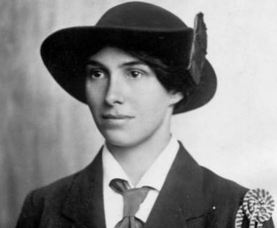 Agnes Baden-Powell – (1858-1945) Her brother Robert started the boy scout movement. He needed someone to help him with a separate club for girls. So, Agnes Baden-Powell helped organize the Girl Guides. She was also an accomplished beekeeper and said it was a preoccupation that every young lady should enjoy. A friend said that she loved all the practical arts and especially cared about birds, insects, and flowers.
Agnes Baden-Powell – (1858-1945) Her brother Robert started the boy scout movement. He needed someone to help him with a separate club for girls. So, Agnes Baden-Powell helped organize the Girl Guides. She was also an accomplished beekeeper and said it was a preoccupation that every young lady should enjoy. A friend said that she loved all the practical arts and especially cared about birds, insects, and flowers.
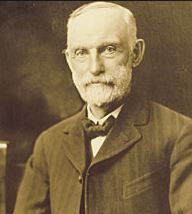 A.I. Root – (1839-1923) An American businessman who ran a jewelry shop until a swarm of bees entered his life. As tragically happens to so many people, Amos Ives Root became addicted to beekeeping. Instead of fretting over the details of his jewelry factory, he would skip out for the day to watch bees or to take a train from Medina, Ohio, to Cleveland to visit beekeepers and talk bees. In 1869, he built a factory to manufacture bee supplies. A couple decades later, his company was shipping four train car loads of freshly- cut equipment every day. Root founded the magazine Gleanings in Bee Culture, published today as Bee Culture, and in 1970, he wrote ABC of Bee Culture, which is regularly updated and reprinted even today. Two fun facts about A.I. Root that everyone should know: he brought a piano into the woodworking factory and made everyone stop work daily for Christian hymn sing-alongs; and, his bee magazine was the first journal in the world to report the Wright Brothers flights.
A.I. Root – (1839-1923) An American businessman who ran a jewelry shop until a swarm of bees entered his life. As tragically happens to so many people, Amos Ives Root became addicted to beekeeping. Instead of fretting over the details of his jewelry factory, he would skip out for the day to watch bees or to take a train from Medina, Ohio, to Cleveland to visit beekeepers and talk bees. In 1869, he built a factory to manufacture bee supplies. A couple decades later, his company was shipping four train car loads of freshly- cut equipment every day. Root founded the magazine Gleanings in Bee Culture, published today as Bee Culture, and in 1970, he wrote ABC of Bee Culture, which is regularly updated and reprinted even today. Two fun facts about A.I. Root that everyone should know: he brought a piano into the woodworking factory and made everyone stop work daily for Christian hymn sing-alongs; and, his bee magazine was the first journal in the world to report the Wright Brothers flights.
Alexander the Great – Conquered the world, then died thousands of miles from home – his men carried his preserved body home for burial in a golden coffin filled with honey. Not sure what happened to the honey when they got home.
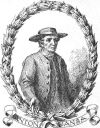 Anton Janša – Maria Theresa’s Royal Beekeeper, from Slovenia. In 1771 Anton Janša discovered how bees mate. He unraveled the ridiculous honey bees system of no fathers for drones, sisterhood among the workers (and sometimes the queen). He was the first headmaster of the first beekeeping school in the world.
Anton Janša – Maria Theresa’s Royal Beekeeper, from Slovenia. In 1771 Anton Janša discovered how bees mate. He unraveled the ridiculous honey bees system of no fathers for drones, sisterhood among the workers (and sometimes the queen). He was the first headmaster of the first beekeeping school in the world.
Aristeaus – He was Virgil’s character in Georgics, and was the Greek patron of beekeeping; he played a scandalous role in the death of Orpheus’ love, Euridice.
Aristotle – This Greek beekeeper and scientist used simple hives with wooden strip top-bars. Some of his observations about bees were pretty clever, others were dead wrong. A founder of clever scientific deduction, he maintained that 1) Masculine creatures are armed with strong weapons; 2) Worker bees have stingers; 3) Therefore, worker bees are males. The idea stuck for 2,000 years.
Arthur Dobbs – Around 1750, this Irish beekeeper and botanist discovered that bees pollinate flowers while gathering nectar and pollen. Dobbs also noticed that a bee stays on the same flower type while collecting: “. . . I have frequently follow’d a bee loading pollen upon its legs, through a part of a great field in flower; and upon whatsoever flower I saw it first alight and gather the pollen, it continued gathering from that Kind of Flower; and has pass’d over many other Species of Flowers, though very numerous in the field, without alighting upon or loading from them eventhough the Flower it chose was much scarcer in the Field than the others.”
Augustus – Worried that he might not live forever, the Roman Emperor Augustus asked a centenarian how he had lived to be a hundred. The reply: “Oil without and honey within.”
 A.Z. Abushady – In Reminiscences of Ahmed Zaki Abu Shadi (1892-1955), the poet-humanist-physician describes how he promoted various beekeeping developments in England and Egypt. While in England, in 1919, he founded the Apis Club, an international organization for beekeepers and bee scientists, based in Oxfordshire. Dr Abushady launched and edited Bee World, a journal devoted to modern bee culture. It’s a magazine that comes to my house via my membership in the International Bee Research Association. In his later years, he lived in the USA where he was a member of the Bronx Beekeepers Association.
A.Z. Abushady – In Reminiscences of Ahmed Zaki Abu Shadi (1892-1955), the poet-humanist-physician describes how he promoted various beekeeping developments in England and Egypt. While in England, in 1919, he founded the Apis Club, an international organization for beekeepers and bee scientists, based in Oxfordshire. Dr Abushady launched and edited Bee World, a journal devoted to modern bee culture. It’s a magazine that comes to my house via my membership in the International Bee Research Association. In his later years, he lived in the USA where he was a member of the Bronx Beekeepers Association.
Ben Franklin – With everything from bifocals, lightning, fossil fish, and the US Constitution in his realm of interests, it is not surprising he is mentioned by Thomas Wildman as a patron for Wildman’s 1768 Treatise on the Management of Bees. As patron, Franklin would have paid for a copy of the book in advance. Whether Ben had bees, we don’t know.
Bernard de Mandeville – Wrote Fable of the Bees in 1723, a book which influenced Adam Smith’s Wealth of Nations. His Fable, or Private Vices; Public Benefits as it was also known, was a parable of a bee society which failed dismally because the honey bees worked too much and saved all their ‘earnings’. I’m guessing that de Mandeville was not a beekeeper. Because the book/poem explained that spending money for personal pleasures leads to more employment and the enrichment of society, the book was scandalous at the time. His doctrine that prosperity was increased by expenditure rather than by saving went against noble 18th-century principles. (But would fit right in today.)
Bill Dennison – This former Mayor of Toronto and beekeeper had bees before his election. He kept them in the heart of the city. Whenever there was a stray swarm, the police would call His Majesty the Mayor. Dennison would get his veil and go fetch the bees – not every city of 3 million can claim such hands-on care from an elected official!!
Bishop William Skylstad – Amateur radio enthusiast, beekeeper, fisherman – and in 2004, Skylstad was President of the U.S. Conference of Catholic Bishops.
Bob Maguire – Father Bob was a beekeeper, “one of the finest periods of my life,” before becoming an activist Australian Catholic priest and community worker. The 2013 documentary, In Bob We Trust, tells his quest for justice for the dispossessed.
 Brigham Young – His interest in bees led to Utah being called the ‘Beehive State’ and having skep hives as emblems. Young even called his first home in Salt Lake City the Beehive House. In 1881, Mormon colonists described the symbol of the beehive: “The hive and honey bees form our communal coat of arms…. It is a significant representation of the industry, harmony, order and frugality of the people, and of the sweet results of their toil, union and intelligent cooperation.”
Brigham Young – His interest in bees led to Utah being called the ‘Beehive State’ and having skep hives as emblems. Young even called his first home in Salt Lake City the Beehive House. In 1881, Mormon colonists described the symbol of the beehive: “The hive and honey bees form our communal coat of arms…. It is a significant representation of the industry, harmony, order and frugality of the people, and of the sweet results of their toil, union and intelligent cooperation.”
Brother Adam – (1898-1996) Originally known as Karl Kehrle, Brother Adam was the Benedictine monk (Buckfast Abbey, England) who developed the famous Buckfast Bee, 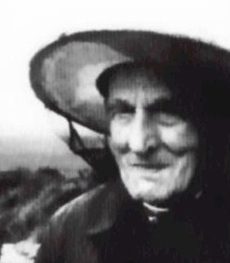 and became the leader of a short-lived beekeeping cult movement. Brother Adam arrived at the Buckfast Catholic monastery when he was 11 years old. He spent the rest of his life there. In 1916, not long after he’d arrived, nearly all the bees at the monastery died. Bro Adam figured the problem was ‘Isle of Wight Disease’ and the solution was to replace the native English bees with sturdy imported stock from somewhere else. He went on a quest throughout the Mediterranean, seeking superior bees. Brother Adam imported what he found and bred more of them. He apparently didn’t subscribe to the theory that the honey bees that were indigenous to England were the best adapted to his adopted homeland. He was considered one of the most talented of all queen breeders – when he died in 1996, the Economist magazine wrote, “”He was unsurpassed as a breeder of bees. He talked to them, he stroked them. He brought to the hives a calmness that, according to those who saw him at work, the sensitive bees responded to.”
and became the leader of a short-lived beekeeping cult movement. Brother Adam arrived at the Buckfast Catholic monastery when he was 11 years old. He spent the rest of his life there. In 1916, not long after he’d arrived, nearly all the bees at the monastery died. Bro Adam figured the problem was ‘Isle of Wight Disease’ and the solution was to replace the native English bees with sturdy imported stock from somewhere else. He went on a quest throughout the Mediterranean, seeking superior bees. Brother Adam imported what he found and bred more of them. He apparently didn’t subscribe to the theory that the honey bees that were indigenous to England were the best adapted to his adopted homeland. He was considered one of the most talented of all queen breeders – when he died in 1996, the Economist magazine wrote, “”He was unsurpassed as a breeder of bees. He talked to them, he stroked them. He brought to the hives a calmness that, according to those who saw him at work, the sensitive bees responded to.”
 Cave Folks – These early impressionist artists created the first images of bee culture in history with their cave paintings in Spain, 6000 BCE. The actual dating remains slightly controversial, but archeologists seem fairly certain that the Cuevas de la Araña cave art is at least 8,000 year old. The scene includes a person on a rope ladder with a honey bucket in one hand while the other is stuffed into the bees’ nest. You may visit this cave, with it’s earliest known depiction of thrill seeking and honey gathering by contacting the museum near Valencia, Spain. Schedule your appointment at info@ecomuseodebicorp.com.
Cave Folks – These early impressionist artists created the first images of bee culture in history with their cave paintings in Spain, 6000 BCE. The actual dating remains slightly controversial, but archeologists seem fairly certain that the Cuevas de la Araña cave art is at least 8,000 year old. The scene includes a person on a rope ladder with a honey bucket in one hand while the other is stuffed into the bees’ nest. You may visit this cave, with it’s earliest known depiction of thrill seeking and honey gathering by contacting the museum near Valencia, Spain. Schedule your appointment at info@ecomuseodebicorp.com.
Charles Butler – (1560–1647) This versatile beekeeper realized the “King Bee” is a “Queen Bee”, finally sinking Aristotle’s 2,000-year-old mistaken notion when he printed (in 1609) a book that asserted that drone bees are male bees. Charles Butler’s book was Feminine Monarchie, the first full-length beekeeping book in the English language. It was a practical beekeepers’ guide and also the first time the feminine nature of the queen was described in print. Lucky for Butler, Queen Elizabeth had been in power just before the book came out, so it was seen as plausible that a lady could lead an army. Butler was also the first to show that bees make wax and don’t gather it from plants, as was commonly assumed. Beekeepers like to claim him, but others have a hold on Butler as well: in 1625 he published a theological work “The Marriage of Cousins”; in 1633 he wrote an English grammar with reformed spelling; and in 1636, he published “The Principles of Music”. He was a minister and wrote hymns for the church he led near Basingstoke. But for beekeepers, his most interesting sheet music was his transcription of beehive sounds into musical notes, a madrigal version of which was performed in concert. Here is a page from Feminine Monarchie with Butler’s description of the various musical voices in a hive:
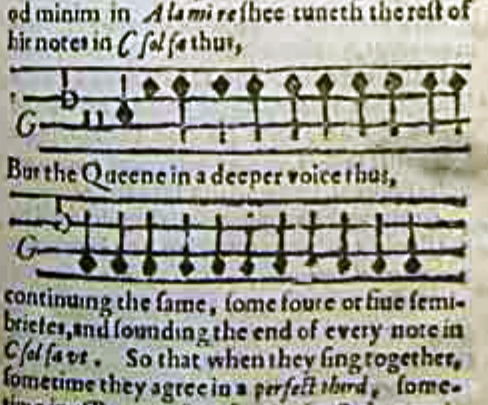
Charles Dadant – (1817-1902) Progressive beekeeper founded Dadant & Sons, an  American beekeeping business now entering its seventh generation of family management. Charles Dadant emigrated from France at age 46. He had a big family and no money but worked his way into nine hives of bees in Illinois which grew to thousands. Along the way, he founded a bee supply factory and became a well-known beekeeping author and publisher. His company continues to update and publish Langstroth’s Hive and the Honey Bee (which grew from LLL’s 300 pages to over 1,300 today). Charles Dadant and his descendants have also continued to publish American Bee Journal from 1869 to the present. (Great magazine, by the way!) To see more about the way a penniless French immigrant who never spoke English well somehow built one of the best bee businesses in the world, you can read the post I wrote to celebrate Charles Dadant’s 200th birthday.
American beekeeping business now entering its seventh generation of family management. Charles Dadant emigrated from France at age 46. He had a big family and no money but worked his way into nine hives of bees in Illinois which grew to thousands. Along the way, he founded a bee supply factory and became a well-known beekeeping author and publisher. His company continues to update and publish Langstroth’s Hive and the Honey Bee (which grew from LLL’s 300 pages to over 1,300 today). Charles Dadant and his descendants have also continued to publish American Bee Journal from 1869 to the present. (Great magazine, by the way!) To see more about the way a penniless French immigrant who never spoke English well somehow built one of the best bee businesses in the world, you can read the post I wrote to celebrate Charles Dadant’s 200th birthday.
 Charles Henry Turner – (1867-1923) In about 1890, Dr. Turner was the first African-American to earn a PhD at the University of Chicago. His 30-plus research papers were written during breaks from teaching high school (not university) in St. Louis, as his race barred him from working, teaching, and researching at colleges or universities. Turner was the first to show that insects alter their behaviour based on their previous experiences. In other words, they can learn. His work on colour-vision of bees and bees’ recognition of patterns, shapes, and temporal passages (he could time bees’ appearance for feedings) predated von Frisch’s similar work by decades.
Charles Henry Turner – (1867-1923) In about 1890, Dr. Turner was the first African-American to earn a PhD at the University of Chicago. His 30-plus research papers were written during breaks from teaching high school (not university) in St. Louis, as his race barred him from working, teaching, and researching at colleges or universities. Turner was the first to show that insects alter their behaviour based on their previous experiences. In other words, they can learn. His work on colour-vision of bees and bees’ recognition of patterns, shapes, and temporal passages (he could time bees’ appearance for feedings) predated von Frisch’s similar work by decades.
Charles Mraz – (1905-1999) Mraz was a pioneer in bee sting therapy. As a beekeeper and apitherapist for more than 60 years, Charlie Mraz used bee venom to treat patients with arthritis, multiple sclerosis, and a host of other disorders. Here’s a video of The Charlie Mraz Story:
Cook and Beals – These beekeepers took a lot of the fuss and muss out of beekeeping by designing the automated uncapping system – ‘good-bye hot knives!’
Columela – Born in Gades (Cádiz), Spain, in the first century – After retiring from the Roman military (where he served with distinction in Syria), Columela returned to Spain to farm and keep bees. He wrote De Rustica which discussed the honey bee and the first system of cuadros móviles (moveable frames!).
Dan Quayle – This former U.S. vice-president’s response to beekeepers seeking price-support help was “Beekeeping is a sweet subsidy that has been ripping off taxpayers for years.” Indeed?
D.C. Jarvis – (1881-1966) This Vermont doctor’s book Folk Medicine made honey very popular in the 1970’s – honey prices went from about $0.20 US to $0.50 US per pound after the release of his million-copy selling book! DeForest Clinton Jarvis particularly urged a prescription of two teaspoons of honey and two teaspoons of apple cider vinegar taken in a glass of water one or more times a day.
Democritus – This famous ancient (How ancient? He lived to be 109. That’s ancient.) Greek apicultural researcher, beekeeper and philosopher taught that new bees could be made from rotting oxen – the King Bee, he figured out, came from decaying bull brains. Nevertheless, we named “Democracy” for him.
Dr. Suess – Probably not a beekeeper. But he did draw the Skritz, which he labeled “B bee” and included it in his book I Had Trouble Getting to Solla Sollew. A few years ago, you could have bought the original Skritz from Peter Harrigton’s for just ten thousand pounds. For a beekeeper’s look at the good doctor and his libertarian parable on bee watching, go here.
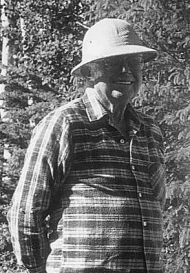 Earl Emde – A clever beekeeper and queen breeder, he began keeping bees in southern California where he went to high school with Richard Nixon (a “weird kid” Earl told me). Earl Emde ended up with thousands of hives throughout the US and Canada. He and his sons may have been the first to use forklifts and pallets to move hives. I worked with Earl in the northern Saskatchewan bush where he kept 500 hives back in the 80s. He had an uncanny knack for making the right choice about almost everything. Before beginning a task, he’d focus a bit while I wanted to jump in and work. (I was pretty young and impatient.) Once he’d schemed the bee chore in his head, he’d then move faster than I could.
Earl Emde – A clever beekeeper and queen breeder, he began keeping bees in southern California where he went to high school with Richard Nixon (a “weird kid” Earl told me). Earl Emde ended up with thousands of hives throughout the US and Canada. He and his sons may have been the first to use forklifts and pallets to move hives. I worked with Earl in the northern Saskatchewan bush where he kept 500 hives back in the 80s. He had an uncanny knack for making the right choice about almost everything. Before beginning a task, he’d focus a bit while I wanted to jump in and work. (I was pretty young and impatient.) Once he’d schemed the bee chore in his head, he’d then move faster than I could.
E B White – Author of Charlotte’s Web, Stuart Little, and a frightening grammar book, White also worte the 1945 New Yorker magazine poem Song of the Queen Bee in which he criticizes Harry Laidlaw’s development of artificial insemination of queen bees.
New Yorker Magazine, 1945
“The breeding of the bee,” says a United States Department of Agriculture bulletin on artificial insemination, has always been handicapped by the fact that the queen mates in the air with whatever drone she encounters.”
When the air is wine and the wind is free
and the morning sits on the lovely lea
and sunlight ripples on every tree
Then love-in-air is the thing for me
I’m a bee,
I’m a ravishing, rollicking, young queen bee,
That’s me.
I wish to state that I think it’s great,
Oh, it’s simply rare in the upper air,
It’s the place to pair
With a bee.
E C Porter – This American invented an easy way to clear bees from honey supers – the Porter Bee Escape, in 1891.
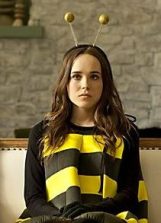 Ellen Page – Canadian actress, star of Hard Candy, Juno, the X-Men series, Trailer Park Boys, Inception, and dozens of other movies and TV shows. Ellen Page has also been a voice actress, something which merged nicely with her interest in honey bees. In 2009, she narrated the documentary Vanishing of the Bees and has been advocating for the hairy little creatures for years.
Ellen Page – Canadian actress, star of Hard Candy, Juno, the X-Men series, Trailer Park Boys, Inception, and dozens of other movies and TV shows. Ellen Page has also been a voice actress, something which merged nicely with her interest in honey bees. In 2009, she narrated the documentary Vanishing of the Bees and has been advocating for the hairy little creatures for years.
Elton Dyce – (1900-1976) In 1935, this Canadian developed the creamed honey formulas for soft, ‘spun’, semi-granulated honey. He figured out that a little ‘seed’ from extra-smooth honey would crystallize a big vat to the same lush consistency. Dyce became a professor at Cornell where an apiculture research building was named for him. For my instructions on how to cream your honey, check this post.
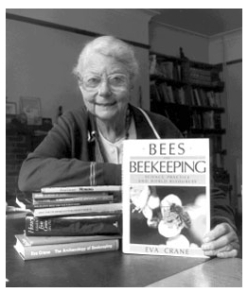
Eva Crane – (1912-2007) Beekeeper, bee researcher, nuclear physicist and author of many books, including Archeology of Beekeeping, and Honey. During World War II, Dr Eva Crane and her husband were given a beehive as a wedding gift. Sugar was rationed so the bees were seen as a particularly sweet gift. I wonder how the gift-giver felt when Eva Crane gave up her physics lecture position at Sheffield University to write about bees. Her biggest contributions (weighing in at ten pounds each) were Bees and Beekeeping (1990; 614 pages) and The World History of Beekeeping and Honey Hunting (1999; 682 pages).
François Hruschka – Czech beekeeper who invented the honey extractor, in 1865, after watching the centrifugal effect of a bucket of milk being swung in circles by a young milk maiden. (Makes you wonder, doesn’t it?) This European invention allowed combs to be emptied and refilled by beekeepers. Adaptations are still in use and help separate the world’s production of four billion pounds of honey every year.
François Huber – (1750-1831) In the late 18th Century, the blind Swiss naturalist and beekeeper François Huber developed special bee hives to improve scientific observation of his bees. His work, viewed through the eyes of his assistant and his wife, resulted in the first clear understanding of the concept of “bee space” – the secret to the building of modern hives with moveable frames. The story of his assistant (François Burnens) and their discoveries is sweetly told in Sara George’s book The Beekeeper’s Pupil.
Fred Hale, Sr. – (1890-2004) Before he died at age 113, in November, 2004, Fred Hale was the oldest man in the world. An easy-going Maine beekeeper and gardener, he had retired from railroad work 50 years before his death. He was driving a car at age 108 and shoveling snow at age 112.
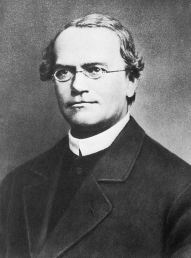 Gregor Mendel – (1822-1884) Monks aren’t usually fathers, but Mendel was the father of genetics before genetics was cool. He was a beekeeper at the time that he did his famous experiments that proved tall peas begat tall peas most of the time. Gregor Mendel discovered the fundamental laws of genetics in pea plants, then spent the rest of his life trying to breed better bees, without success. It would take later generations to figure out that drones have no father, workers are half-sisters, and the queen has two grandmothers but only one grandfather. Without knowing any of this, Mendel found that honey bee genetics was undecipherable.
Gregor Mendel – (1822-1884) Monks aren’t usually fathers, but Mendel was the father of genetics before genetics was cool. He was a beekeeper at the time that he did his famous experiments that proved tall peas begat tall peas most of the time. Gregor Mendel discovered the fundamental laws of genetics in pea plants, then spent the rest of his life trying to breed better bees, without success. It would take later generations to figure out that drones have no father, workers are half-sisters, and the queen has two grandmothers but only one grandfather. Without knowing any of this, Mendel found that honey bee genetics was undecipherable.
Harlan J. Smith, PhD – (1924-1991) This Texan beekeeper was director of McDonald Observatory since 1963 and attained worldwide recognition as an astronomer, researcher and administrator of one of the world’s finest observatories and in his work with NASA. Harlan Smith has a crater on the moon named for him. A rare honour for any beekeeper.
Harry H. Laidlaw, Jr. – (1907-2003) Professor Laidlaw of the U of C Davis Department of Entomology was considered the pioneer in bee genetics and aspects of practical bee breeding. Harry Laidlaw was largely responsible for perfecting artificial queen bee insemination, for which see our entry for E.B. White, above. But here’s this beekeeper’s other claim to fame – his first book was published in 1932, while his most recent was published in 1997 – Laidlaw wrote and published for 65 years!!
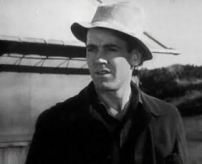 Henry Fonda – (1905-1982) The star of 96 films, this hobby beekeeper gave away his Hollywood honey in jars that he labeled Henry’s Honey. He kept his bees on his Bel Air estate, where they fed on lemon and orange trees. (“A real paradise for bees,” said Fonda.) I wonder if people ate the honey, or just kept it on a shelf to show everyone else? Fonda had been a long-time beekeeper. When he was a youngster growing up in Nebraska, Henry Fonda earned the Eagle Scout’s merit badge for beekeeping.
Henry Fonda – (1905-1982) The star of 96 films, this hobby beekeeper gave away his Hollywood honey in jars that he labeled Henry’s Honey. He kept his bees on his Bel Air estate, where they fed on lemon and orange trees. (“A real paradise for bees,” said Fonda.) I wonder if people ate the honey, or just kept it on a shelf to show everyone else? Fonda had been a long-time beekeeper. When he was a youngster growing up in Nebraska, Henry Fonda earned the Eagle Scout’s merit badge for beekeeping.
Hippocrates – The father of medicine frequently recommended honey as a remedy for whatever ails you. He wrote, ‘Honey and pollen cause warmth, clean sores and ulcers, soften hard ulcers of lips, heal carbuncles and running sores.’ (Does anyone know what a car bunkle is?)
Horacio Quiroga – (1878-1937) Surrealist writer of late 19th century Uruguay, 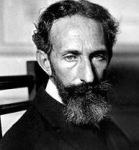 Quiroga excelled in the intense portraying of mental illness and hallucinatory states and in depicting epic struggles of survival, usually in primordial settings. Metaphorically (in his plays and stories) as well as physically (attempting to tame savage animals), Horacio Quiroga spent years in his jungles. Among his physical beasts were, of course, honey bees. With all his brutish themes, it is surprising that his children’s book about a lazy exiled bee which fends off a snake is so popular. But you can buy a pretty, colourful version of The Lazy Bee for your own children to enjoy. Or, go on-line to read the story.
Quiroga excelled in the intense portraying of mental illness and hallucinatory states and in depicting epic struggles of survival, usually in primordial settings. Metaphorically (in his plays and stories) as well as physically (attempting to tame savage animals), Horacio Quiroga spent years in his jungles. Among his physical beasts were, of course, honey bees. With all his brutish themes, it is surprising that his children’s book about a lazy exiled bee which fends off a snake is so popular. But you can buy a pretty, colourful version of The Lazy Bee for your own children to enjoy. Or, go on-line to read the story.
Icarus – This ancient Greek astronaut flew too close to the sun and the beeswax holding the feathers to his arms melted – the feathers came loose and he is still falling.
Indra – Goddess and namesake of ancient India – her first food as a little baby goddess was honey.
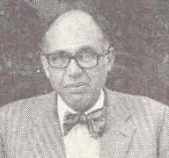 Jim Powers – (1927-2009) During the 1960s, 70s, and 80s, Jim operated 30,000 hives in Idaho, the Dakotas, Hawaii, Florida, and Texas. He had the largest honey farm in the USA at the time and was generally a rather wise and progressive beekeeper. Before that, he spent a few years as a Foreign Service Officer in Central America. I knew him when he was running his thousands of colonies. He was the only beekeeper I knew who regularly wore a bow tie and who was a graduate of Harvard Business School. To manage his far-flung beekeeping empire, Jim would drive from state to state in a small Volkswagen, then show up asking, “OK, what are we doing today?” It kept his crews on their toes.
Jim Powers – (1927-2009) During the 1960s, 70s, and 80s, Jim operated 30,000 hives in Idaho, the Dakotas, Hawaii, Florida, and Texas. He had the largest honey farm in the USA at the time and was generally a rather wise and progressive beekeeper. Before that, he spent a few years as a Foreign Service Officer in Central America. I knew him when he was running his thousands of colonies. He was the only beekeeper I knew who regularly wore a bow tie and who was a graduate of Harvard Business School. To manage his far-flung beekeeping empire, Jim would drive from state to state in a small Volkswagen, then show up asking, “OK, what are we doing today?” It kept his crews on their toes.
Jirí Dienstbier – A leader of the Czech Republic’s Social Democratic Party and a Senator, Dienstbier says he is also a very enthusiastic beekeeper.
Johannes Mehring – (1816-1878) This German beekeeper invented wax comb foundation in 1857. Foundation is the hexagonal pattern molded from wax that help bees stay straight and comb between the lines, so to speak. Mehring is also noted as the author of the longest-titled beekeeping book ever published: Das neue Einwesensystem als Grundlage der Bienenzucht oder Wie der rationelle Imker den höchsten Ertrag von seinen Bienen erzielt.
John Eels – America’s first known beekeeper is known to us today because he went broke. Mr. John Eels was put in charge of an experimental apiary in Newbury, Massachusetts, in 1645 (just 25 years after the Mayflower). Operating the village bees, Eels quickly became North America’s very first pauper, requiring financial assistance from the town in order to survive. (Let that be a forewarning to potential beekeepers: a beekeeper was the first welfare case in the USA.) In fairness to Eels, honey crops in Massachusetts are small and wintering is difficult.
John Greenleaf Whittier – (1807-1892) This New England 19th-century poet kept bees and wrote the tale of telling the bees about the death of the beekeeper. If you’ve never read the poem, see the full piece and you may be surprised at whom the bees mourn. Telling the Bees includes the lines:
Before them, under the garden wall,
Forward and back,
Went drearily singing the chore-girl small,
Draping each hive with a shred of black.
Trembling, I listened: the summer sun
Had the chill of snow;
For I knew she was telling the bees of one
Gone on the journey we all must go!
Jonathan Swift – In “The Battle of the Books,” wrote that the bee said: “Instead of dirt and poison, we have chosen to fill our hives with honey and wax, thus furnishing mankind with the two noblest of things, which are sweetness and light.”
J.S. Harbison – He went to Calaveras County, California, in 1854, seeking gold. He ended up becoming one of California’s first beekeeperss instead. Harbison left Beaver County, Pennsylvania, at age 28. He was already an experienced western Pennsylvania beekeeper. Since the gold rush was ebbing, he decided to bring bees from the east, through Panama, and up to San Diego. His great claim to fame was the biggest crop of honey in the world (in 1868) and his subsequent shipment of train car loads of comb honey from California to Chicago and New York.
Juraj Fándly – Father Fándly was a nineteenth century Slovak priest who wrote a history of Slovakia, but also produced a treatise on bees in 1801. He began publishing the journal Slovenskí vðelá, (Slovakian Beekeeper), in 1802.
 Karl von Frisch – (1886-1982) Translated the bee’s dance into German and won the Nobel Prize for this and related animal beehavior studies. Von Frisch was foremost an animal behaviour scientist. His first work discovered that fish can detect colour. By 1925, Karl von Frisch was director of the Munich University’s Institute of Zoology. In 1927, when he published The Dancing Bees, his critics scoffed. But his theory of the waggle dance as a bee communication tool proved largely correct. His 1973 Nobel Prize recognized his “achievements in comparative behavioral physiology and pioneering work in communication between insects.”
Karl von Frisch – (1886-1982) Translated the bee’s dance into German and won the Nobel Prize for this and related animal beehavior studies. Von Frisch was foremost an animal behaviour scientist. His first work discovered that fish can detect colour. By 1925, Karl von Frisch was director of the Munich University’s Institute of Zoology. In 1927, when he published The Dancing Bees, his critics scoffed. But his theory of the waggle dance as a bee communication tool proved largely correct. His 1973 Nobel Prize recognized his “achievements in comparative behavioral physiology and pioneering work in communication between insects.”
Krishna – The Hindu deity, has often been depicted as a bee. Four thousand years ago, Hindu ancestors taught that eating honey and pollen would lead to a long life… If Krishna really is a bee, this could change our perspective on the ‘Hairy’ Krishnas.
Lê Quý Quỳnh – (1923-2012) A Communist politician, soldier, and physician, Le Quy Quynh resided in Ho Chi Minh City (Saigon), Vietnam, for most of his life. He was respected in Vietnam as a “Hero of the Revolution” for leading forces during Vietnam’s wars of independence. He served as Adjutant to General Giiap, and as defense minister in Ho Chi Minh’s first post-war cabinet. However, his real claim to fame is his 50 years as a beekeeper and his research in medical treatments using bees and bee products. He was chair of the Vietnam Beekeepers Association for several years and helped expand commercial beekeeping from several thousand colonies to over a million by the time of his death.
Leo Tolstoy – (1828-1910) This Russian author was an avid beekeeper. His wife, Sonja, talked about him “crouching in front of his hives, net over his head.” And she wrote in her diary, “The apiary has become the centre of the world for him now, and everybody has to be interested exclusively in Bees!” Tolstoy mentions beekeeping twice in War and Peace (it’s a long book, you’d expect beekeeping to come up, wouldn’t you?) Tolstoy describes the evacuation of Moscow: “Moscow was empty. It was deserted as a dying, queenless hive is deserted.” Read more on bees and beekeeping in War and Peace.

L.L. Langstroth – (1810-1895) In 1851, this minister discovered the practical use of Bee-Space and designed the beehive commonly used in North America. Langstroth is commonly credited with discovering ‘bee space’ – an idea that led to his design of freely hanging frames. This invention is the most important single advance in commercial beekeeping. His 1853 book, The Hive and the Honey Bee, is brilliantly written, and is the first descriptive treatise of modern bee management. I’ve read his original – with a few exceptions, it remains an accurate guide to practical beekeeping. I was astounded to discover that the book was written in a few manic months. Langstroth suffered from debilitating cycles of mania and depression. When he was active, he worked day and night. When he crashed into one of his frequent stupors, he hid in an unlit bedroom for weeks.
Lord Alexander – (1885-1965) Albert Victor Alexander, 1st Earl Alexander of Hillsborough, was British Minister of Defence under Churchill. Lord Alexander, in 1937, at the age of 45, was the youngest general in the British army. In 1942, he commanded the forces in Burma and then became Commander-in-Chief in the Middle East. King George VI appointed Lord Alexander as Governor-General of Canada (1946-1952). While in that position, he kept bees in Rideau Park, Ottawa.
 Lord Baden Powell – (1857-1941) Robert Baden-Powell, 1st Baron was founded the Boy Scouts in England. This beekeeper, when preparing honey for showing, mistakenly allowed it to overheat and it burnt, becoming dark. He showed it anyway and due to his prestige, Lord Baden-Powell created a fashion for dark honey in England for many years. He’s also fondly remembered for this line in his famous book Scouting for Boys, meant to encourage boys to be more like bees: “They are quite a model community, for they respect their Queen and kill their unemployed.”
Lord Baden Powell – (1857-1941) Robert Baden-Powell, 1st Baron was founded the Boy Scouts in England. This beekeeper, when preparing honey for showing, mistakenly allowed it to overheat and it burnt, becoming dark. He showed it anyway and due to his prestige, Lord Baden-Powell created a fashion for dark honey in England for many years. He’s also fondly remembered for this line in his famous book Scouting for Boys, meant to encourage boys to be more like bees: “They are quite a model community, for they respect their Queen and kill their unemployed.”
Luis Mendez de Torres – Spanish scientist, discovered the queen is a female and mother to the bees in the hive in 1586. This discovery is sometimes credited to Charles Butler, but Mendez published his findings twenty years earlier.
Luke – The author of the Book of Luke says that the first food eaten by Christ after his resurrection was fish and honey: Jesus apparently asked, “Have you got food? I haven’t had anything to eat in three days!” And they offered him a piece of broiled fish and a honeycomb, which he ate. Luke, Chapter 24, 41-43.
Lycurgus – The founder of Sparta was so impressed by the honeybees’ social structure, sacrifice, and sharing that he used the bee colony as his model for a perfect form of government for the Spartans.
Marcus Aurelius – This famous Roman emperor, philosopher, and potentially world’s first socialist said, “What is not good for the swarm is not good for the bee.”
Maria von Trapp – (1905-1987) After the family escaped Austria, the real-life little nun and governess from the Sound of Music was encouraged by her husband Georg to keep bees on their Vermont farm.
Marla Spivak – A pioneering honeybee researcher, Spivak has been developing hygienic bees for us non-hygienic beekeepers for years. She is helped form the The Tashjian Bee and Pollinator Discovery Center to showcase honey making and beekeeping at the University of Minnesota. She is a university prof (including Ent 4021 Honey Bees and Insect Societies and Ent 8061 Scientific Communication and Ethics) and in 2010 she won one of the $500,000 “genius grant” from the John D. and Catherine T. MacArthur Foundation. Many of you have seen her excellent TED talk, a review of what’s been killing honey bees:
Martha Stewart – The American Style advocate has been a model, a stockbroker, and a beekeeper for over thirty years! The avid gardener realized a long time ago that keeping bees is a good thing. She’ll show you how beekeeping can be a good thing if you check Martha Stewart Living: Backyard Beekeeping.
Martin John – This English beekeeper has been credited with discovering (in 1684) that bees make wax, they don’t gather it. However, he may have just read about that in Charles Butler’s beekeeping guide which was published fifty years earlier.
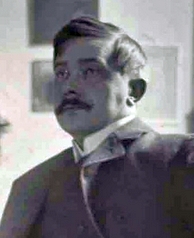 Maurice Maeterlinck – (1862-1949) The 1911 Literature Nobel Prize winner was an essayist, poet, playwright, and early leader in symbolist drama. He was also a beekeeper for sixty years. Maurice Maeterlinck wrote The Life of the Bees in 1901, a work in prose that deals with philosophy and nature and contributed to his Nobel. In the book, he claims, “no living creature, not even man, has achieved in the center of his sphere, what the bee has achieved.” Well, that’s debatable. He is also the likely source of the infamous quote (“If bees disappeared from the earth, humans would be dead within four years.”) which is mistakenly attributed to Einstein, as you can see in my post here.
Maurice Maeterlinck – (1862-1949) The 1911 Literature Nobel Prize winner was an essayist, poet, playwright, and early leader in symbolist drama. He was also a beekeeper for sixty years. Maurice Maeterlinck wrote The Life of the Bees in 1901, a work in prose that deals with philosophy and nature and contributed to his Nobel. In the book, he claims, “no living creature, not even man, has achieved in the center of his sphere, what the bee has achieved.” Well, that’s debatable. He is also the likely source of the infamous quote (“If bees disappeared from the earth, humans would be dead within four years.”) which is mistakenly attributed to Einstein, as you can see in my post here.
Mew – The Reverend Bill Mew developed one of the first really modern hives in 1649 – complete with multi-story honey holding boxes and top bar frames. He got many of his ideas from the common Greek hive with moveable frames which he had seen on his travels.
Mohammed – The founder of Islam reportedly said, “Honey is the remedy for every illness.” And, from Surah, Chapter 47, Verse 15: “(Here is) a Parable of the Garden which the righteous are promised: in it are rivers of water incorruptible; rivers of milk of which the taste never changes; rivers of wine, a joy to those who drink; and rivers of honey pure and clear.”
Mohammed Ali – Former heavy-weight champ ate lots of pollen and honey and attributed this as part of the reason he could sting like a bee.
Moravians – It is claimed in the book “The Trail of the Black Walnuts” that Moravian missionaries to Kent County, Ontario, brought the first hives of bees to Canada in 1792. This seems unlikely because bees had been in the British American colonies to the south since at least 1645, so they surely appeared in Ontario long before 1792. However, the Moravians were beekeepers and encouraged the pursuit at their missions.
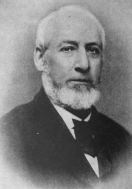 Moses Quinby – (1810-1875) This beekeeper invented the modern bee smoker in 1875. But much earlier – in the 1830s, he was the first large-scale commercial honey producer in North America with 1,200 colonies. Moses Quinby made as much as 20,000 pounds of honey a year from hives kept in boxes – no moveable combs, no foundation for frames, no extractors in those days. His 1853 book, Mysteries of Bee-Keeping Explained, encouraged the rapid growth of beekeeping as a business.
Moses Quinby – (1810-1875) This beekeeper invented the modern bee smoker in 1875. But much earlier – in the 1830s, he was the first large-scale commercial honey producer in North America with 1,200 colonies. Moses Quinby made as much as 20,000 pounds of honey a year from hives kept in boxes – no moveable combs, no foundation for frames, no extractors in those days. His 1853 book, Mysteries of Bee-Keeping Explained, encouraged the rapid growth of beekeeping as a business.
Napoleon Bonaparte – used the bee as his symbol of his personal immortality. His red cape is remembered for its bee print, perhaps stitched on by his wife, Empress Josephine, or perhaps not.
Nickel Jacob – This German scientist/beekeeper discovered that workers could raise a new queen from a young larvae, in 1568. This discovery led to modern queen rearing systems.
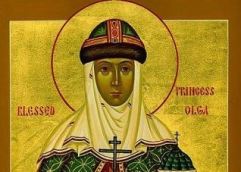 Olga – A Saint of the Slavic persuasion, Saint Olga was a pretty brutal warrior. She invited her enemies to her son’s funeral, gave them her most potent honey-wine (five times as much alcohol as regular wine) and then had her soldiers kill all four thousand of the drunks. Olga remains the patron saint of not getting drunk in our enemy’s home.
Olga – A Saint of the Slavic persuasion, Saint Olga was a pretty brutal warrior. She invited her enemies to her son’s funeral, gave them her most potent honey-wine (five times as much alcohol as regular wine) and then had her soldiers kill all four thousand of the drunks. Olga remains the patron saint of not getting drunk in our enemy’s home.
Paul Theroux – An American travel writer (The Great Railway Bazaar plus about 50 short stories, novels, and non-fiction books) keeps a large apiary at his home on Oahu. Taking a page from Sherlock Holmes, he says, he started with a couple hives and soon realized he had 80 colonies in his backyard. I read once that Paul Theroux sells his whole crop to Alan Wong’s restaurant in Honolulu.
 Peter Fonda – Actor, activist, and cool guy on a motorcycle, Peter Fonda was named Beekeeper of the Year by the Florida State Beekeeping Association for deftly portraying Ulee in the 1997 movie Ulee’s Gold, and for his contributions to beekeeping and awareness of the crap beekeepers deal with every day.
Peter Fonda – Actor, activist, and cool guy on a motorcycle, Peter Fonda was named Beekeeper of the Year by the Florida State Beekeeping Association for deftly portraying Ulee in the 1997 movie Ulee’s Gold, and for his contributions to beekeeping and awareness of the crap beekeepers deal with every day.
Pooh, Winnie the – Sometimes considered a cuddly creature, he could be acutely mischievous, as evidenced in his final interaction with Piglet.
Pope Urban III – used the bees as his official stamp and symbol in Rome in 1626.
Presidents of the United States – Some presidents may distinguish themselves as successful revolutionaries, but both George Washington and Thomas Jefferson also poked their hands into bees nests more than a few times. One visitor to this web site tells me that the first president, agricultural experimenter and ‘never told a lie’ beekeeper George Washington, probably kept bees in progressive wooden boxes (instead of gums or skeps) according to records in the storehouse at Mount Vernon. Jefferson had several bee books in his library and his farm boss, Edmund Bacon, maintained forty hives at Monticello for Jefferson. By contrast, Michelle and Barack kept only two hives at the White House gardens.
Prince Cesi – In 1625, this Italian prince and beekeeper made the world’s first microscopic drawings of honeybees.
Petro Prokopovich – (1775-1850) In the early 19th century, beekeeper Petro Prokopovich kept 10,000 hives (!) in the Ukraine – the first truly large-scale commercial beekeeper in the world.
Pythagoras – Ancient Greek mathematician, cult founder, and beekeeper – the strictest of his followers ate only bread and honey.
Ramses III – This ancient Egyptian Pharaoh, King, Deity, and Ruler of Heaven and Earth (but only from 1198-1167 BCE), offered a lesser river god a 30,000 pound honey sacrifice by dumping beekeepers’ honey into the Nile.
Raymond Poincare – This beekeeper was president of France during the Great War. He took time out by tending his beehives behind the Presidential Palace.
Richard Remnant – In England, 1637, credited with figuring out that worker bees are female bees, though others were already onto it.
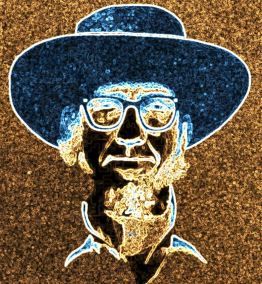 Dr. Richard Taylor – (1919-2003) This beekeeper was a very serious comb honey producer – his Joys of Beekeeping is considered the definitive work on joyful beekeeping and comb honey making. But Richard Taylor was also a professional philosopher (i.e., he got paid for philosophizing) – his day job was teaching (and thinking about) philosophy. Richard Taylor literally wrote the book on Metaphysics. It is still the best introduction to the subject and is used as a text book for first year philosophy students. But Taylor wasn’t a space cadet beekeeper. He was very nuts-n-bolts. He grew up during the big depression and was squeamish about misspending a penny. He also believed that hard work and careful planning were essential to any job, but especially to successful beekeeping – which he proved by making a lot of money from just 300 hives. I have a few favourite Taylorisms:
Dr. Richard Taylor – (1919-2003) This beekeeper was a very serious comb honey producer – his Joys of Beekeeping is considered the definitive work on joyful beekeeping and comb honey making. But Richard Taylor was also a professional philosopher (i.e., he got paid for philosophizing) – his day job was teaching (and thinking about) philosophy. Richard Taylor literally wrote the book on Metaphysics. It is still the best introduction to the subject and is used as a text book for first year philosophy students. But Taylor wasn’t a space cadet beekeeper. He was very nuts-n-bolts. He grew up during the big depression and was squeamish about misspending a penny. He also believed that hard work and careful planning were essential to any job, but especially to successful beekeeping – which he proved by making a lot of money from just 300 hives. I have a few favourite Taylorisms:
“Woe to the beekeeper who has not followed the example of his bees by keeping in tune with imperceptibly changing nature, having his equipment at hand the day before it is going to be needed rather than the day after. Bees do not put things off until the season is upon them. They would not survive that season if they did, so they anticipate. The beekeeper who is out of step will sacrifice serenity for anxious last-minute preparation, and that crop of honey will not materialize. Nature does not wait.”
“Sometimes the world seems on the verge of insanity, and one wonders what limit there can be to greed, aggression, deception, and the thirst for power or fame. When reflections of this sort threaten one’s serenity, one can be glad for the bees…” – Richard Taylor, The Joys of Beekeeping
 Rob Smith – This Australian beekeeper produced a world record 762 pounds from each of 460 hives in 1954. I learned this bit of trivia when I was a teenager and I’ve never been the same since. Others have claimed the world record for honey production, but Rob Smith was surely number first. I’ve been corresponding with Smith’s daughter, Jenny. She sent news clipping about her father’s celebrated super-crop of Karri eucalyptus honey in western Australia, south of Perth. One day (soon, I hope) I’ll write a story about him. Meanwhile, take a look at this post.
Rob Smith – This Australian beekeeper produced a world record 762 pounds from each of 460 hives in 1954. I learned this bit of trivia when I was a teenager and I’ve never been the same since. Others have claimed the world record for honey production, but Rob Smith was surely number first. I’ve been corresponding with Smith’s daughter, Jenny. She sent news clipping about her father’s celebrated super-crop of Karri eucalyptus honey in western Australia, south of Perth. One day (soon, I hope) I’ll write a story about him. Meanwhile, take a look at this post.
Robert Holekamp – A German immigrant and one of St Louis, Missouri’s leading businessmen around 1900, he was also the state’s leading beekeeper. Concerned about the spread of foulbrood disease among bees in Missouri, Holekamp proposed a bill and successfully lobbied to see it passed – one of the first laws to set up an inspection office and system for bee disease control in the USA.
The Romans – The ancient Romans shot beehives as catapult projectiles. They found this ammunition so effective that they depleted most of central Italy of bees during their early wars of unification.
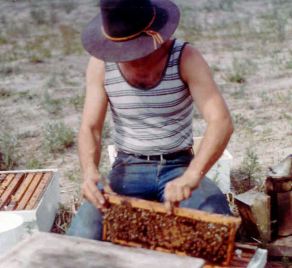 Ron – This beekeeper, author (Bad Beekeeping), and geophysicist is president of a high-tech geophysical analysis business. As a university student, he won Canada’s highest award for excellence in geophysics and helped develop the 3-dimensional calculus algorithms applied with Greene’s functions to reduce atmospheric pressure effects from residual super-conducting gravimeter responses. He can sort of read a few languages (and won his university’s Russian Language Award); has been a radio announcer in Florida, folk guitar picker with the Trottier Family Band, a licensed professional engineer in Alberta, and bee inspector in Pennsylvania. He has raised a few thousand queens and packages, and produced over a million pounds of honey in Alberta, Saskatchewan, Pennsylvania, Wisconsin, and Florida. He is also a Dad, but still finds time to operate a blog for beekeepers.
Ron – This beekeeper, author (Bad Beekeeping), and geophysicist is president of a high-tech geophysical analysis business. As a university student, he won Canada’s highest award for excellence in geophysics and helped develop the 3-dimensional calculus algorithms applied with Greene’s functions to reduce atmospheric pressure effects from residual super-conducting gravimeter responses. He can sort of read a few languages (and won his university’s Russian Language Award); has been a radio announcer in Florida, folk guitar picker with the Trottier Family Band, a licensed professional engineer in Alberta, and bee inspector in Pennsylvania. He has raised a few thousand queens and packages, and produced over a million pounds of honey in Alberta, Saskatchewan, Pennsylvania, Wisconsin, and Florida. He is also a Dad, but still finds time to operate a blog for beekeepers.
Samson – The bible guy, discovered a swarm of honey bees living in a lion’s carcass: “Out of the eater came something to eat, out of the strong came something sweet.”(Judges 14).
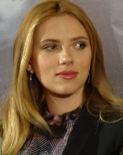 Scarlett Johansson – She took up beekeeping when actor Samuel L Jackson gave her a beehive as a wedding gift for her and Ryan Reynolds. Contrary to rumour, he did not bring it to the wedding, but showed up a few days later with bees in his car. Jackson said, “Scarlett was always talking about how the bees were dying and the planet was going to die.” I guess he figured that she should do something about it.
Scarlett Johansson – She took up beekeeping when actor Samuel L Jackson gave her a beehive as a wedding gift for her and Ryan Reynolds. Contrary to rumour, he did not bring it to the wedding, but showed up a few days later with bees in his car. Jackson said, “Scarlett was always talking about how the bees were dying and the planet was going to die.” I guess he figured that she should do something about it.
Shakespeare – Old Willie had something to say about everything, including the honey bee: “Where the bee sucks, there suck I.”- The Tempest
Sherlock Holmes – This great detective retired to a simple life of puttering around with bees. As a beekeeper, he continued to demonstrate his problem-solving expertise.
Shirley Ann Jackson, PhD – Starting with a beekeeping experiment in grade school (She called it an early failed attempt at genetic experimentation.) this African-American is now (November 2004) the president of Rensselaer Polytechnic Institute.
 Sir Edmund Hillary – (1919-2008) A commercial beekeeper (he and his brother operated 1400 hives) from New Zealand. You might know him better as the guy who first scaled Mount Everest, in May, 1953, with the help of Tenzing Norgay. Edmund Hillary was sure the attention around their climb would blow over, so he went back to beekeeping the next year. But people came calling and he became an advocate for the Nepali mountains and the people who lived on them.
Sir Edmund Hillary – (1919-2008) A commercial beekeeper (he and his brother operated 1400 hives) from New Zealand. You might know him better as the guy who first scaled Mount Everest, in May, 1953, with the help of Tenzing Norgay. Edmund Hillary was sure the attention around their climb would blow over, so he went back to beekeeping the next year. But people came calling and he became an advocate for the Nepali mountains and the people who lived on them.
Sir George Wheler – British traveler described moveable top-bar frames used traditionally used in Greece. His 1682 writings preceded the Langstroth moveable comb hive by almost 200 years.
 St. Ambrose – (340-297) In legend, a swarm landed on this infant’s mouth, predicting a life as a great orator. No information has ever been given on the amount of honey harvested from his face, but you can learn more about him at here. Ambrose is the patron saint of beekeeping (celebrated December 7) and our word ambrosia, meaning either nectar or food of the gods, is somehow related to him. Less well known is that Saint Ambrose is credited with the idea of reading silently instead of vocalizing as one reads, which was apparently the only way to read until Ambrose came along.
St. Ambrose – (340-297) In legend, a swarm landed on this infant’s mouth, predicting a life as a great orator. No information has ever been given on the amount of honey harvested from his face, but you can learn more about him at here. Ambrose is the patron saint of beekeeping (celebrated December 7) and our word ambrosia, meaning either nectar or food of the gods, is somehow related to him. Less well known is that Saint Ambrose is credited with the idea of reading silently instead of vocalizing as one reads, which was apparently the only way to read until Ambrose came along.
Steve Vai – His fans claim he’s perhaps the best guitar player on this planet we call home. You can read about Steve’s big obsession with honey bees at Steve Vai’s Bee Page. You can hear his music on almost any radio. Check out my blog post and see how much of a bee guy Steve Vai is.
Sue Hubbell – Critically acclaimed best selling author of A Book of Bees, A Country Year, Broadsides from the Other Orders: A Book of Bugs, and Waiting for Aphrodite.
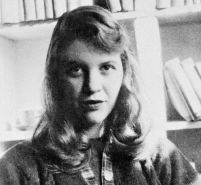 Sylvia Plath – (1932-1962) American poet (for something really depressing, try The Bee Meeting), beekeeper, and author. Sylvia Plath was inspired largely by her father, Professor Otto Plath, and his beekeeping. He was a harsh, disciplined man who died when Sylvia was eight. This informs much of the life that followed for his daughter, the poet. She lived a tragic, prolific, short life – suicide at 30 in London. Her biography is on Great American Poets: Plath. Here’s the first stanza of her brilliant, yet dismal, The Bee Meeting:
Sylvia Plath – (1932-1962) American poet (for something really depressing, try The Bee Meeting), beekeeper, and author. Sylvia Plath was inspired largely by her father, Professor Otto Plath, and his beekeeping. He was a harsh, disciplined man who died when Sylvia was eight. This informs much of the life that followed for his daughter, the poet. She lived a tragic, prolific, short life – suicide at 30 in London. Her biography is on Great American Poets: Plath. Here’s the first stanza of her brilliant, yet dismal, The Bee Meeting:
Who are these people at the bridge to meet me? they are the villagers—
The rector, the midwife, the sexton, the agent for bees
In my sleeveless summery dress I have no protection,
And they are all gloved and covered, why did nobody tell me?
They are smiling and taking out veils tacked to ancient hats.
Thomas Edison – I doubt that Edison himself was a beekeeper, but when I visited his estate in Fort Myers, Florida, I saw bees kept in the fashion that Edison’s groundskeeper would have maintained them. Thomas Edison famously hated food – its sight and its smell. All his food was cooked in a kitchen outside his home so he didn’t have to inhale any aromas from it. Most likely his bees were kept to produce beeswax for use in his scientific experiments, not for the deliciously scented bouquet of the honey.
Thomas Jefferson – He was the third American president, but he had a lot of interests outside politics. He was one of the first Unitarians (and wrote a new version of the Bible), he was a farmer (he developed new planting techniques) and an avid beekeeper. Thomas Jefferson, in his nature book Notes on Virginia, wrote this about how the honey bee came to North America:
“The honeybee is not a native of our country. Marcgrave, indeed, mentions a species of honeybee in Brazil. But this has no sting, and is therefore different from the one we have, which resembles perfectly that of Europe. The Indians concur with us in the tradition that it was brought from Europe, but when and by whom we know not. The bees have generally extended themselves into the country a little in advance of the settlers. The Indians, therefore, called them the white man’s fly, and consider their approach as indicating the approach of the settlement of the whites.” – Thomas Jefferson
Turlough O’Bryen – During the late 1800s, O’Bryen rode his bicycle up and down Ireland promoting beekeeping as a way for the stressed potato farmers to supplement their livelihoods. Ireland is not a great place for keeping bees – crops are marginal. So we don’t know if his promotion of the craft had a positive net effect or not.
Ulee Jackson – This fictional Florida beekeeper, played by Peter Fonda, became famous with the release of the dramatic, acclaimed feature film Ulee’s Gold, starring Peter Fonda and Patricia Richardson – released June 13, 1997. The story line includes a Vietnam vet whose wife has died, his son is in jail, his daughter-n-law is recovering from addictions, and his three granddaughters are living with him. All the while, Ulee has to get the tupelo honey harvested and move his bees to pollination. Best line from the movie comes after Jimmy Jackson, in prison for robbery, asks his father Ulee, “You think there’ll be a place for me in the bees when I get out of here?” to which Ulee says that the honey price is down and mites are killin’ the bees, yet Jimmy Jackson responds, “From where I’m comin’ anything would be grand.” I wonder how many other beekeepers get started that way?
Vicente Fox – The president of Mexico says that they used bee stings as a test for bravery on the family ranch when he was a youngster.
Viktor Yushchenko – The leader of the orange movement and president of the Ukraine is an avid beekeeper.
Virgil – A beekeeper and poet, he wrote about bees in the Aeneid. “Such is their toil and such their pain; As is the bees’ in their flowery plain… All with united force combine to drive, the lazy drones from the laborious hive….”
Waldo McBurney – He was recognized as America’s ‘oldest worker’ at age 104 in 2006. His job? Beekeeping, of course.
 Warwick Kerr – Kerr is the great-grandson of a Confederate army colonel from the southern states who settled in Brazil after the American Civil War. Dr. Kerr became an entomologist and geneticist and has published 620 research papers. He was the first to understand the stingless bee’s weird sex life. Like our honey bees, drones of Melipona are also haploids. But for females, our bees differentiate castes by type and quantity fed to developing larvae. Not so with the stingless bees – queens develop from heterozygous double or even triple sets of alleles – homozygotes become workers! Warwick Kerr did some of his genetics work at Columbia University and he was a visiting prof at UCLA. But most of his life was spent in Brazil where Kerr has been an outstanding spokesman for Brazil’s poor and politically oppressed. This led to a brief internment in prison a few decades ago. As an apicultural researcher, social activist, and beekeeper, he brought African bee stock to Brazil in an attempt to improve honey production and the standard of living for poor and indigenous beekeepers in the South American tropics. An assistant accidentally released 26 mated African queen bees into the wild in 1957. The Brazilian military government tried to discredit Kerr’s science because of his anti-fascist politics. Kerr will be 95 this year. Please take a moment to read his story at my post. It’s surprising.
Warwick Kerr – Kerr is the great-grandson of a Confederate army colonel from the southern states who settled in Brazil after the American Civil War. Dr. Kerr became an entomologist and geneticist and has published 620 research papers. He was the first to understand the stingless bee’s weird sex life. Like our honey bees, drones of Melipona are also haploids. But for females, our bees differentiate castes by type and quantity fed to developing larvae. Not so with the stingless bees – queens develop from heterozygous double or even triple sets of alleles – homozygotes become workers! Warwick Kerr did some of his genetics work at Columbia University and he was a visiting prof at UCLA. But most of his life was spent in Brazil where Kerr has been an outstanding spokesman for Brazil’s poor and politically oppressed. This led to a brief internment in prison a few decades ago. As an apicultural researcher, social activist, and beekeeper, he brought African bee stock to Brazil in an attempt to improve honey production and the standard of living for poor and indigenous beekeepers in the South American tropics. An assistant accidentally released 26 mated African queen bees into the wild in 1957. The Brazilian military government tried to discredit Kerr’s science because of his anti-fascist politics. Kerr will be 95 this year. Please take a moment to read his story at my post. It’s surprising.
🐝 🐝🐝🐝 🐝🐝🐝 🐝🐝🐝 🐝🐝🐝 🐝🐝🐝 🐝🐝🐝 🐝🐝🐝 🐝🐝🐝 🐝🐝
Know someone that you think belongs on this list?
Add ’em below in Comments. Our panel of judges will review your suggestions.
